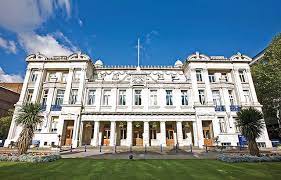Queen Mary University of London: Queen Mary research features in new Science Museum Group exhibition on cancer
‘Cancer Revolution: Science, innovation and hope,’ opened by the Science Museum Group with support from Cancer Research UK, is the first major object-rich exhibition to reveal the past, present and future of how cancer is prevented, detected and treated. The exhibition presents the stories of people affected by cancer, together with those who study and treat it, revealing how researchers, clinicians, policy makers and patients are fuelling progress in a powerful expression of shared hope.
The CanBuild project, led by Professor Balkwill of BCI’s Centre for Tumour Microenvironment, is one of the ten pioneering studies featured at the exhibition. The CanBuild project team is working to build mini models of tumours in the laboratory that grow like human cancers. The team hope these models will help to study more accurately how cancer develops and provide a platform to discover and test new treatments.
After attending the opening of the exhibition, Professor Balkwill said: “I was really blown away by this exhibition – it captures so well the exciting advances in cancer research”.
How to build a tumour
For the CanBuild project, the team are focussing on a common site of cancer spread (metastasis) in ovarian cancer called the omentum. They first deconstructed human omental tumour samples to characterise the different cell types (and their proportions) present in the tumour and its environment. This deconstruction provided the ‘parts list’ to re-construct the artificial tumours in the laboratory.
At the CanBuild project display in the exhibition, visitors will learn about the mini tumour models that the team has generated so far, engineered from up to five different cells types found in ovarian tumours, as well as the organ-on-a-chip models that the team has developed to study how these mini-tumours grow blood vessels.
The exhibit features the work of Bea Malacrida (postdoctoral researcher), Joash Joy (PhD student) and Florian Laforets (postdoctoral researcher) from Professor Balkwill’s laboratory group, as well as the work of BCI Group Leader Dr Oliver Pearce and his laboratory group member Elliot Puttock (PhD student).
The exhibition opened on 22 October 2021 at the Science and Industry Museum in Manchester and will move to the Science Museum in London in May 2022.

